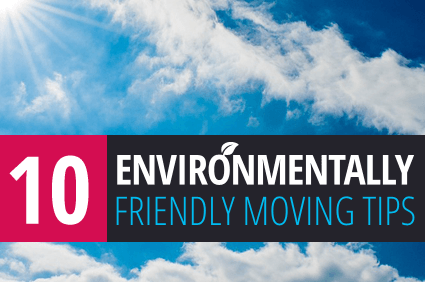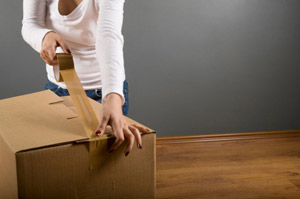Top 10 Environmentally Friendly Moving Tips

23-07-2015 09:45:23am
Your move doesn't have to cost the Earth. Follow our top 10 tips to help your move be a more environmentally friendly one.
You are here: home > removalists blog > Top 10 Environmentally Friendly Moving Tips
Today, we are more conscious about the impact that our actions have on the environment. Moving can be a costly exercise, and not just in the financial sense: cardboard boxes, paper, bubble wrap, the copious amounts of fuel it takes to move tonnes of furniture in a big truck over a long distance. Your household move can take a hefty toll on the environment. Today we will provide a few simple tips that can help you save some money, while ensuring that your move doesn't have to cost the Earth.
Today, we are more conscious about the impact that our actions have on the environment. Moving can be a costly exercise, and not just in the financial sense: cardboard boxes, paper, bubble wrap, the copious amounts of fuel it takes to move tonnes of furniture in a big truck over a long distance. Your household move can take a hefty toll on the environment. Today we will provide a few simple tips that can help you save some money, while ensuring that your move doesn't have to cost the Earth.
#1 Embrace the Urge to Purge
One of the best ways to reduce the footprint of your move, and the damage to your hip pocket, is to downsize your move. The less you move, the less packaging, fuel and resources will be required. It makes no sense to pay to move stuff you don't want or need. Moving is the best time to unburden yourself from the clutter. So embrace the urge to purge.
#2 The Right Kind of Free Moving Boxes
Choosing free boxes can cost you a lot more than it will save. There's nothing wrong with using free boxes, as long as they're of a decent quality. It's always best to use cartons that are made specifically for moving. Boxes from the supermarket are not generally strong enough for moving and they're prone to collapse, crushing and tearing. If you're looking to save money on moving boxes, try classified sites like Gumtree or Craigslist. People often offer their removal boxes for free after there move to get rid of them. Just make sure they're still sturdy enough.
#3 Pay it Forward
Consider offering your moving boxes to others once you've finished. You can give them to friends or advertise them for free in a classified ad. Any packaging materials that can't be reused should be recycled, wherever possible.
#4 An Alternative to Buying Boxes
Consider renting packaging materials. There are many companies that rent out moving boxes and there's sure to be one in your area. This means that the boxes will have a greater chance of being reused and it'll save you some money too.
#5 Choose Recycled
Choose packing materials that are made from recycled materials, and that are recyclable when you've finished.
#6 Reduce Your Contribution to Pollution
As you pack, you're likely to come across of variety of chemicals and other hazardous materials. Most removalists will not move hazardous materials. Please think about the environment before disposing of any and always follow the instructions for disposal listed on the label. Check with local authorities for drop-off centres for common waste types - like paints.
#7 Green Clean
Moving takes a Spring Clean to the next level. Try to minimise the impact on the environment by using biodegradable, eco-friendly cleaning products - wherever possible.
#8 Backloading: The Removalist's Equivalent of Car-Pooling
Use a backloading removalist. If you're moving long-distance, some removalists will charge you for the entire truck. That's not just a waste of valuable resources, it's also terrible for the environment. A backloading removalist fills their truck with as many jobs as will fit, sharing the cost between clients, maximises efficiency and, in turn, has the lowest impact on the environment.
#9 Road V's Rail
For interstate removals, you may not have a choice of which mode of transport your furniture removalist's use, but it would be remiss of us not to look the efficiencies offered by the two most popular modes of transport: road and rail.
Both methods have their pro's and con's. But when it comes to the environment, transport by rail is the clear winner. Rail is a far more efficient means of transporting freight over long distances.
When you're choosing your furniture removalist, it's worth asking them if they use road trucks, rail, or a combination of both to help you make an informed decision.
#10 Renewable: A Natural Choice
This is another example of how going green in a better choice, but again, not only for the environment's sake. Increasingly, people are buying and using plastic storage tubs to use in place of moving boxes. This is a bad idea on several couple of fronts:
- Plastic tubs don't offer the same level of protection as cardboard moving boxes. When it comes to protecting your goods, plastic tubs aren't even close to matching the performance of proper moving boxes.
- Unlike cardboard, plastic tubs aren't generally made from renewable resources. Well, unless you're willing to wait for millions of years for more plants to die and break down into crude oil! Plastic is generally made from petrochemicals.
- They don't stack as well and take up more more room in the truck, which equates to less efficiency, increased costs, and a greater impact on the environment..
- Plastic takes much, much longer to degrade.
